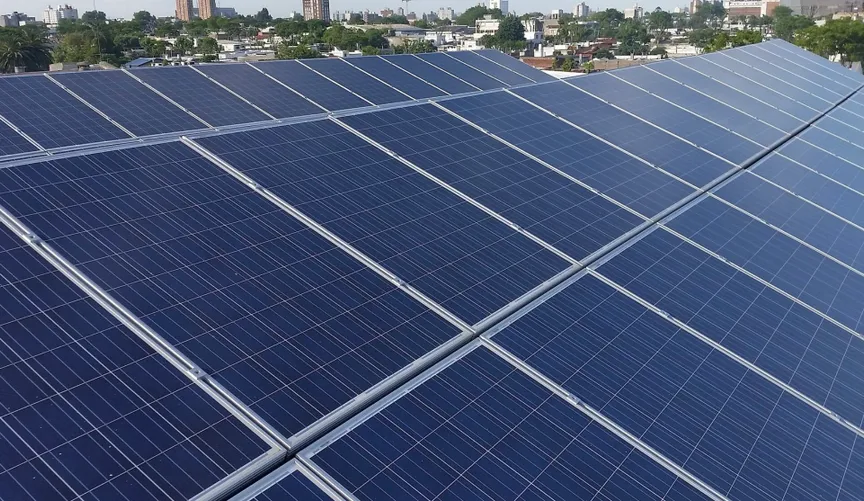
The Nigerian government’s plan to ban solar imports is fraught with significant economic and strategic contradictions. While Minister of Science and Technology Uche Nnaji claims that this ban aims to enhance local manufacturing and boost Nigeria’s renewable energy independence, it will actually deepen energy poverty, delay the country’s energy transition targets, hinder investment, and inflate costs in the emerging solar energy sector.
Currently, solar energy accounts for less than 0.5% of Nigeria’s electricity generation, which is primarily dominated by gas-based thermal energy, accounting for approximately 70% of the total. The national grid supplies an average of only 5,700 megawatts (MW) daily, with the highest peak recorded at 6,003 MW in April 2025. Due to unreliable power supply, rising fossil fuel costs, and increasing heatwaves, Nigeria’s off-grid and embedded solar systems now contribute an estimated 1,000 MW to the country’s power supply, surpassing the grid-based supply.
According to data from #Stears, Nigerians independently generate over 45,000 MW of electricity through diesel and petrol generators. Captive, off-grid generation, primarily by industries such as the Dangote Group, has risen to 6,000 MW. This emerging energy independence is precisely what Nnaji’s solar ban will undermine. A sudden ban on solar imports without corresponding domestic production will lead to higher costs, limited access, and delayed adoption, negatively affecting households, businesses, and key projects supported by development agencies and the Rural Electrification Agency (REA).
The most pressing issue is Nigeria’s lack of a functioning solar supply chain. The country currently lacks the necessary infrastructure for large-scale solar panel production. While there is some silica mining in regions such as Lagos, Ondo, and Akwa Ibom, there is no industrial-scale production of polysilicon, a crucial material for solar PV cells. Other essential minerals, such as cadmium, cobalt, and lithium, are either underexplored or produced in minimal quantities. This fragmented and inefficient supply chain hampers large-scale manufacturing and market demand.
Addressing this issue requires a comprehensive federal policy that combines fiscal incentives, public-private infrastructure partnerships, and improvements in logistics to create resilient, vertically integrated industry clusters. The strategy should focus on co-locating suppliers and manufacturers in regional hubs, along with workforce development programs that ensure skills align with advanced production ecosystems. Without this infrastructural ecosystem, Nigeria cannot establish a robust local manufacturing capacity for solar energy.
The official argument suggests that the country has sufficient local capacity to meet its solar panel needs. Agencies like the National Agency for Science and Engineering Infrastructure (NASENI) point to projects such as the $172 million Nasarawa plant, yet it remains largely non-operational. A closer examination of urban markets reveals a heavy reliance on imports, with locally made panels being nearly non-existent.
Without confirmed production figures or a clear list of manufacturers, such policy claims appear premature and potentially misleading. NASENI and the Ministry of Science and Technology should not focus on assembling panels; they should concentrate on mapping supply chains and connecting markets. This includes identifying players across mining, processing, manufacturing, and distribution. Their role is not to manufacture panels but to establish markets and supply chains: linking silica miners with manufacturers, financing research into PV efficiency, and regulating imports to prevent the dumping of substandard equipment.
Furthermore, the government should act as a catalyst rather than a gatekeeper. It should play a crucial role in creating markets through tax holidays, import duty waivers for raw materials, and providing low-interest financing options for solar start-ups, similar to China’s approach. Incentives must aim to build a competitive domestic ecosystem rather than disrupt markets with a ban.
To achieve long-term import reduction, creating an environment that makes local production more competitive and reliable is crucial. As local supplies increase, market forces will naturally reduce dependency on foreign panels. This approach will drive down costs, scale up adoption, and attract investment.
The government needs to incentivise the entire supply chain through tax breaks for miners and processors, low-interest loans for manufacturers, and subsidies for research and development, tools that have proven effective for China and Brazil.
Additionally, the emerging field of long-duration energy storage (L-DES) can help address the inefficiencies of solar energy. Most solar panels today lose 70% of the energy they absorb; L-DES could mitigate this issue and enhance energy retention.
Our universities, particularly the Federal Universities of Technology, should be central to this research and development effort. NASENI should fund these institutions to drive innovation in energy storage and battery design.
About the Author
Basil Abia is a research and policy consultant who supports think tanks, senior public offices, startups, civic engagement, and development projects in the Global South. He is also the co-founder of Veriv Africa, a research and advisory company that synthesises information into actionable intelligence in Africa.

